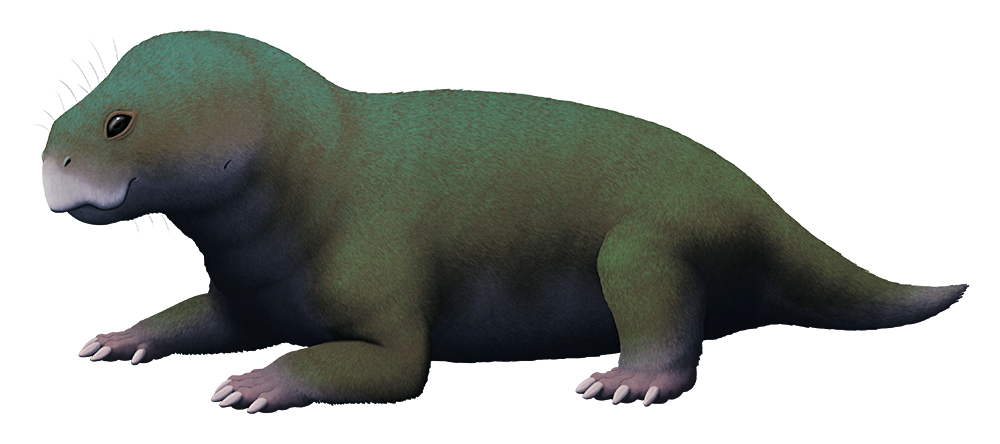Even before Lystrosaurus briefly took over the world, the dicynodont synapsids were a highly successful group. These herbivorous beaked-and-tusked mammal-cousins were abundant all over the supercontinent of Pangaea during the Late Permian and occupied a wide variety of ecological niches, ranging from rat-sized to almost bear-sized. (And later during the Triassic some got even bigger.)
Towards the smaller end of that size range were species like Diictodon. Living around 259-254 million years ago in Southern Africa (but with fossils also found in northern China, suggesting a much larger geographic range) this dicynodont grew up to about 45cm long (1’6″) and was a gopher-like creature adapted for digging, with a tubular body and short muscular limbs.
It was a very common animal, making up around half of all vertebrate fossils in some locations. Numerous preserved spiral-shaped burrows have been found concentrated in small areas, going down as much as 1.5m (5′) into the ground.
Several different species have been named within the Diictodon genus, but currently they’ve all been lumped together under the single name of Diictodon feliceps. There’s a lot of anatomical variation between specimens, though, with some notably being smaller and lacking the distinctive tusks seen in others – which may be evidence of sexual dimorphism, with the tuskless individuals possibly being females. (Although differences in inner ear anatomy may also indicate they were a separate species entirely, in which case female D. feliceps might instead be represented by fossils showing smaller tusks.)
I’ve illustrated one of the tuskless forms here, since they don’t generally get as much attention as the tusked ones. It’s also speculatively fluffy and iridescent similar to modern golden moles.

